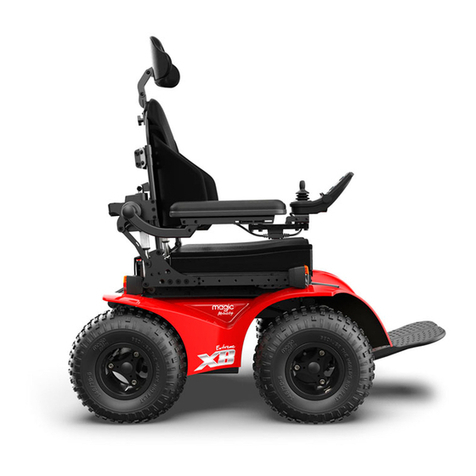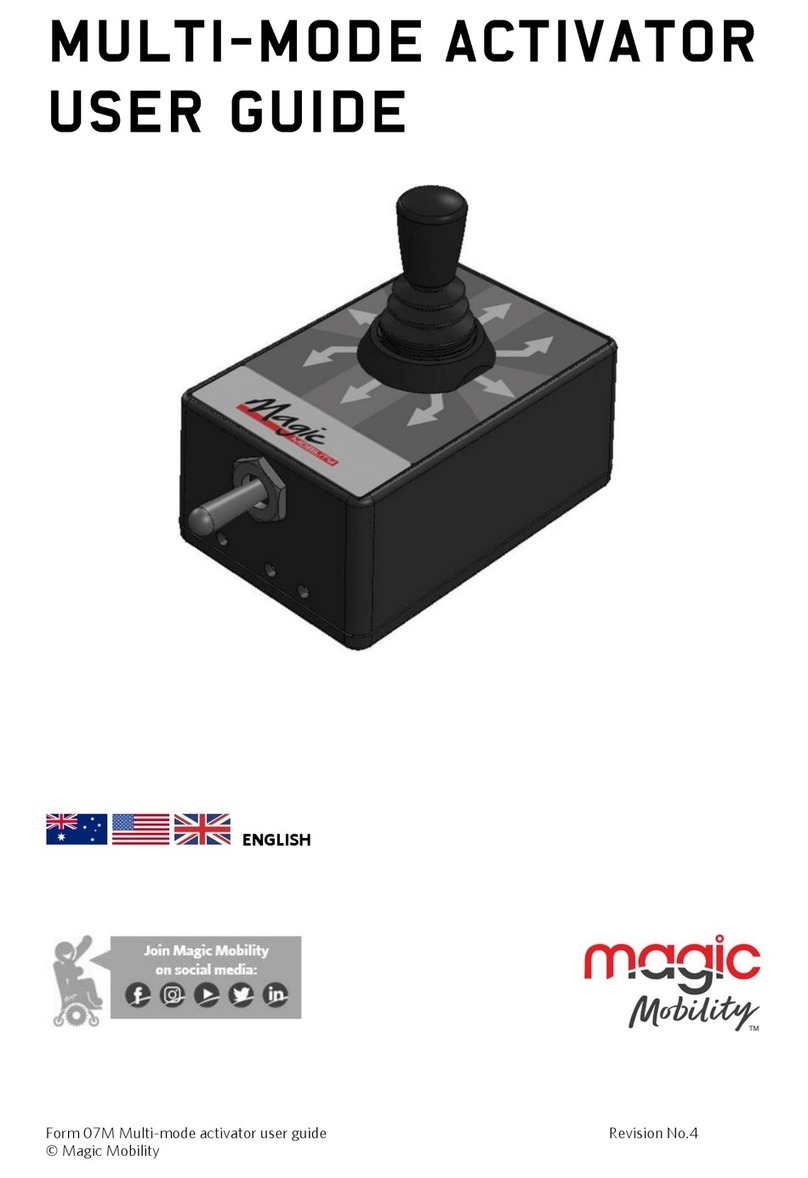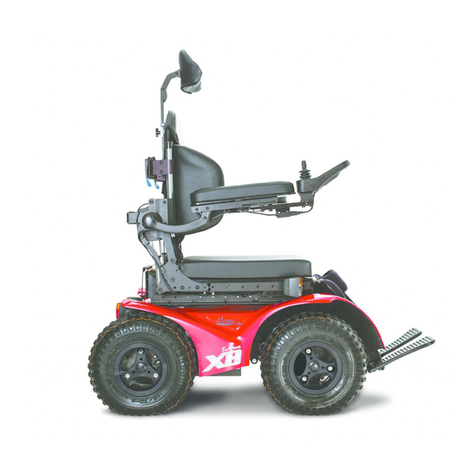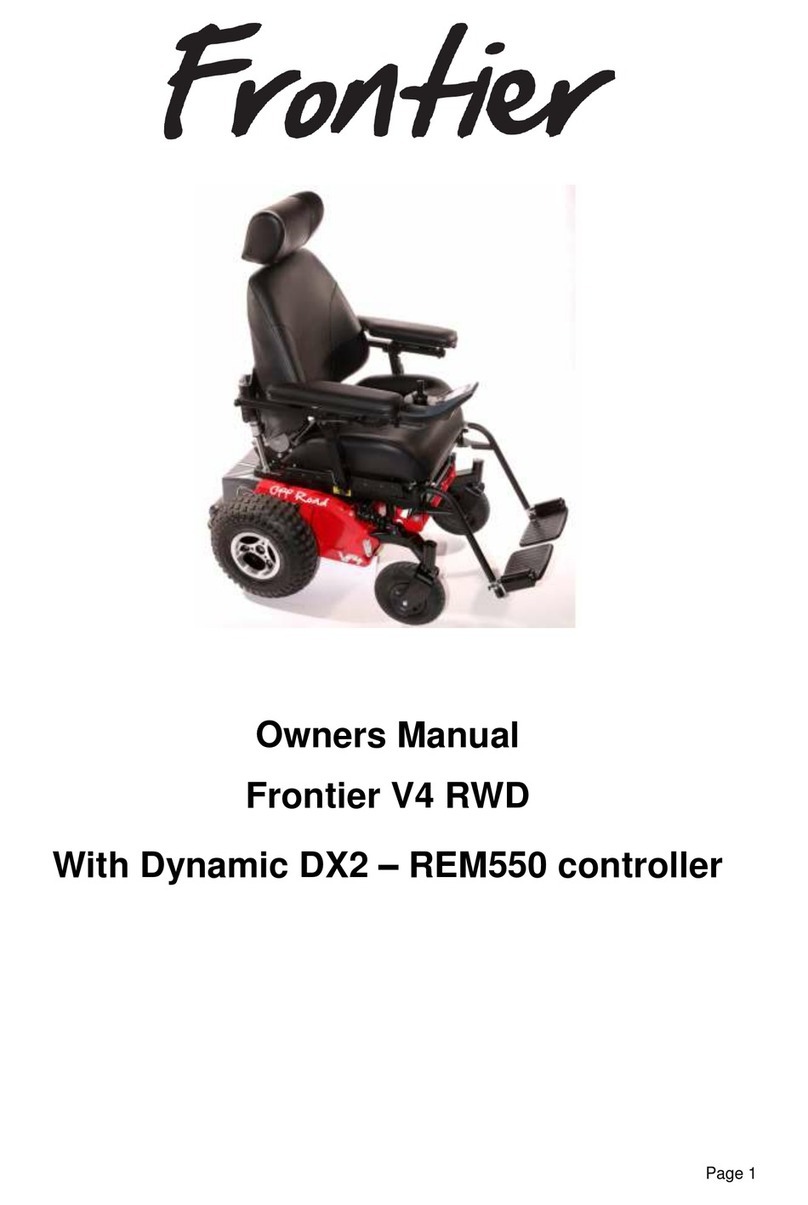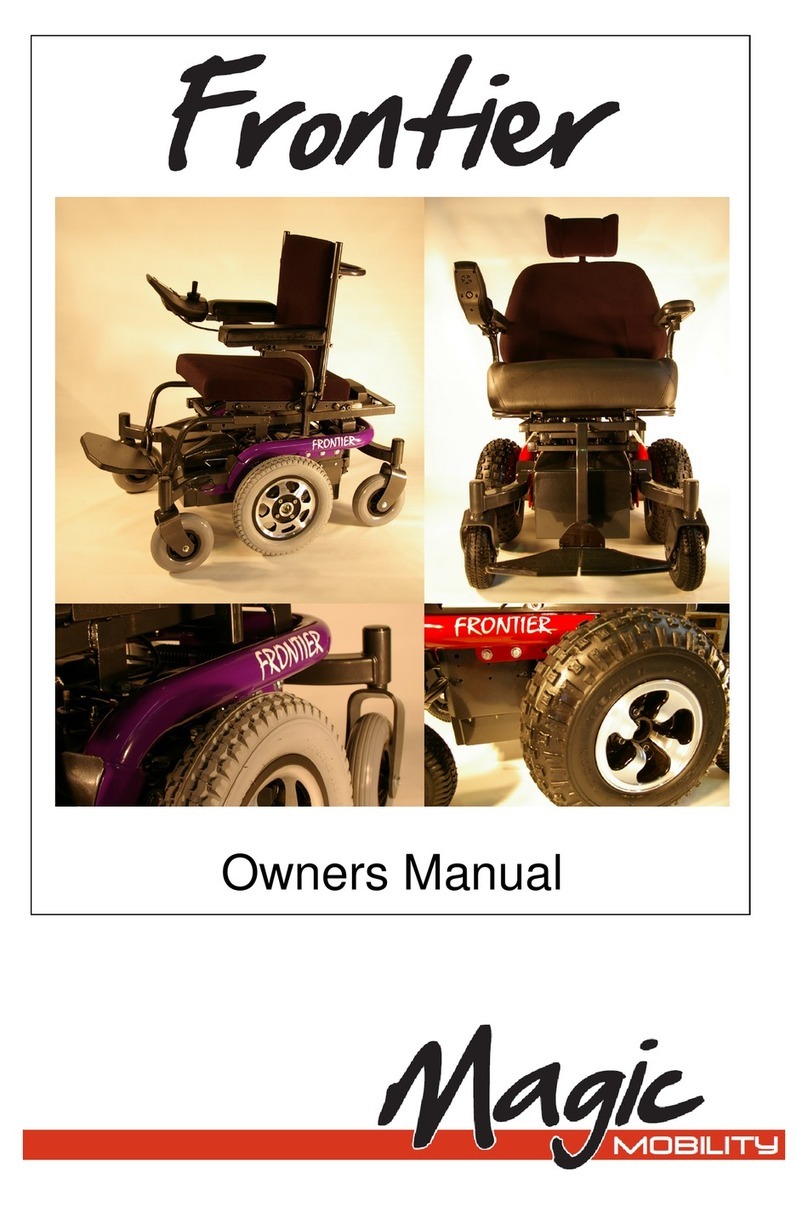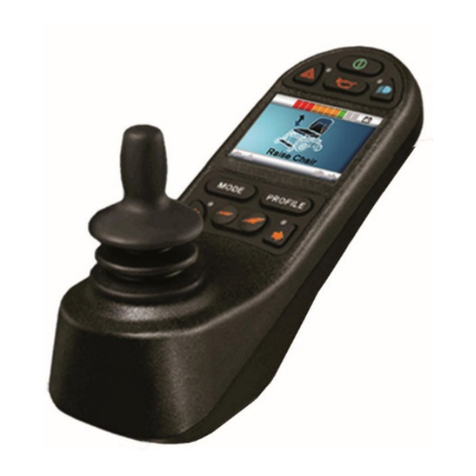Page 4
Contents
1Power Wheelchair Owner’s Manual .................................................................... 2
1.1 Intended Use................................................................................................ 2
2Safety and Damage Warnings............................................................................ 3
3Safety................................................................................................................. 6
3.1 Transfers...................................................................................................... 6
3.2 Motor Vehicle Transport............................................................................... 7
3.3 Weight Limitations........................................................................................ 7
3.4 Stairs and Escalators.................................................................................... 7
3.5 Public Streets and Roadways....................................................................... 7
3.6 Stationary Obstacles: (Steps, Kerbs, Etc.).................................................... 7
3.7 Climbing or Descending an Incline ............................................................... 8
3.7.1 Maximum Recommended Incline........................................................... 8
3.8 Removable Parts.......................................................................................... 9
3.9 Cornering Information................................................................................... 9
3.10 Electromagnetic Fields.............................................................................. 9
3.11 Positioning Belts...................................................................................... 10
3.12 Weather Precautions............................................................................... 10
3.13 Reaching and Bending............................................................................ 10
3.14 Prescription Drugs/Physical Limitations................................................... 10
3.15 Alcohol.................................................................................................... 11
4Specifications ................................................................................................... 12
4.1 The FrontierAT............................................................................................. 12
4.2 Features and Options................................................................................. 12
4.3 Performance Attributes............................................................................... 13
5Operating Instructions....................................................................................... 14
5.1 Performance adjustments........................................................................... 14
5.2 Comfort adjustments .................................................................................. 14
5.3 Freewheel Mode –pushing the power chair............................................... 14
5.4 Tilt in space seat option –if fitted ............................................................... 15
6Joystick controls ............................................................................................... 16
6.1 Joystick power............................................................................................ 16
6.2 Rain and Water .......................................................................................... 16
6.3 Joystick lead............................................................................................... 16
6.4 Controller program ..................................................................................... 16
6.5 Hand control joystick operation –figure 3................................................... 17
6.5.1 On/Off Button....................................................................................... 17
6.5.2 Right Indicator (If Lights Are Fitted)..................................................... 17
6.5.3 Horn..................................................................................................... 17
6.5.4 Left Indicator (If Lights Are Fitted)....................................................... 18
6.5.5 Mode.................................................................................................... 18
6.5.6 ASK (Accessory Shortcut Key)............................................................. 18
6.5.7 Lighting Menu Mode –If Fitted (Not Standard)..................................... 19
6.5.8 Lock Mode –If Fitted (Not Standard) ................................................... 19
6.5.9 The Joystick......................................................................................... 19
6.5.10 Charging........................................................................................... 20
7Batteries & Charging......................................................................................... 21
7.1 Batteries..................................................................................................... 21
7.2 Battery Charging ........................................................................................ 21
7.3 Charging Procedure ................................................................................... 21
7.4 Battery Disposal and Recycling.................................................................. 22
8Care & Maintenance......................................................................................... 23


